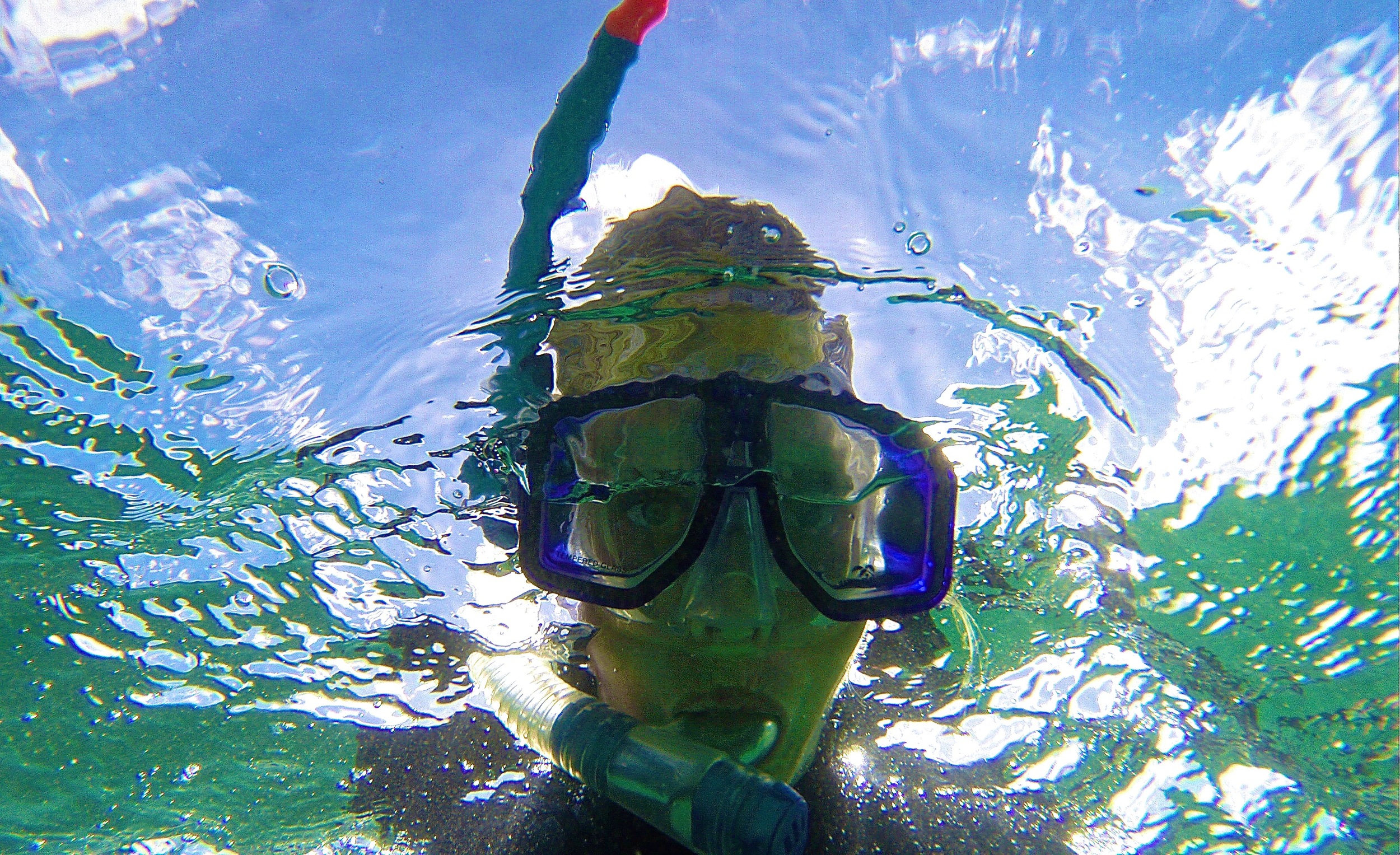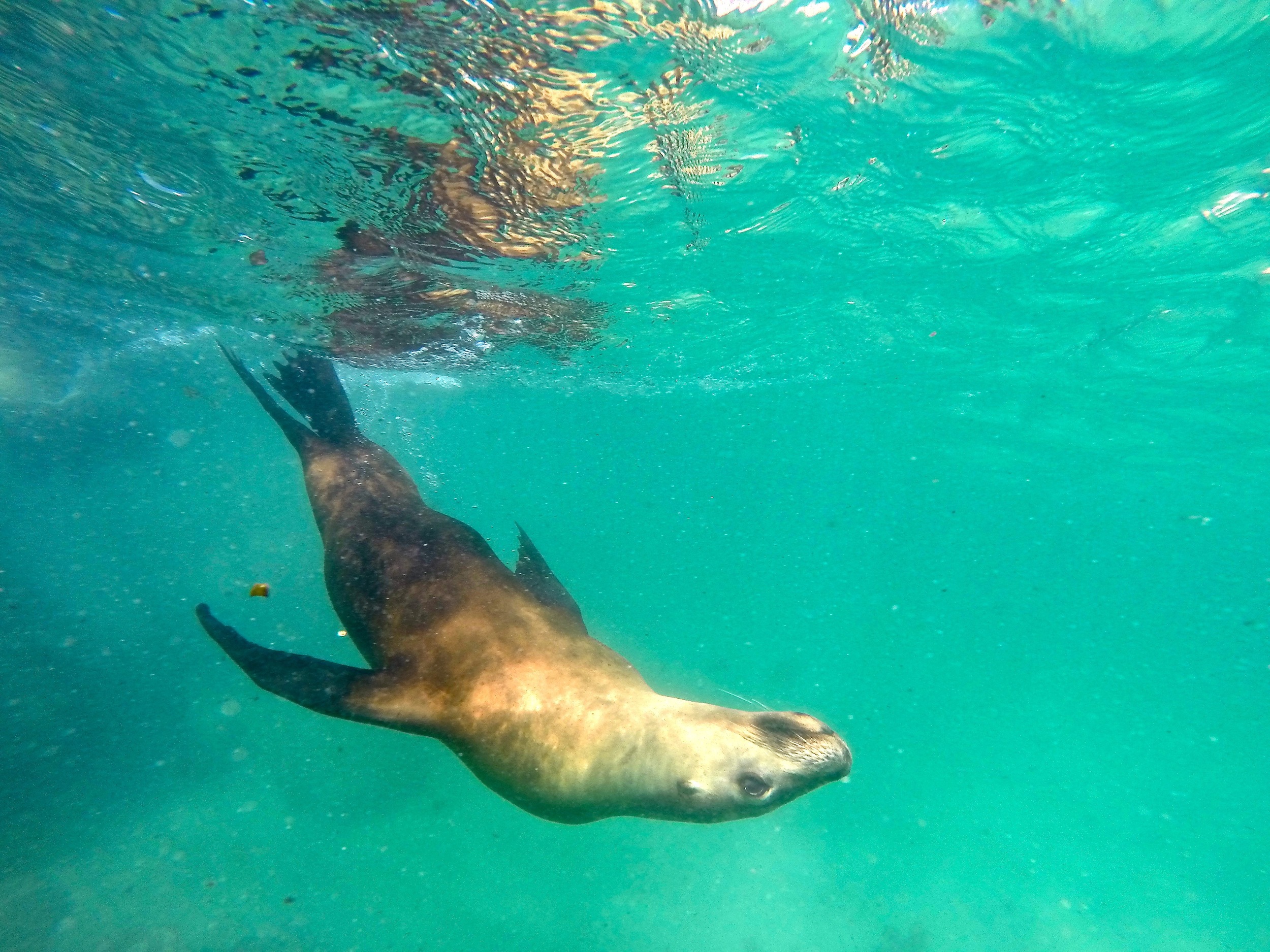THE AUSTRALIAN SEA LION
Endemic and Enamoured
June 4, 2014







My recent move down under to Australia has granted access to some of nature’s magnificent creatures. After traveling seven hours by car in an attempt to cage-dive with great white sharks, I was disappointed when none swam by, despite understanding their migratory behaviour and its unpredictable nature. As a child I dreamed of becoming a marine biologist and whale veterinarian, as ocean life fascinated me! I decided to see what else was in the water during my stay in Port Lincoln, South Australia. Fortunately, I crossed waves with an intellectual, curious pinniped; a unique species that greeted me in its own backyard! I was smitten at first glimpse.
Beached Lions
The Australian Sea-lion, or Neophoca Cinerea, is the only pinniped endemic to Australia. Their breeding range extends from Western to Southern Australia, with some found around Victoria and Tasmania. Like migratory birds, they return to the same breeding ground annually (so-called site fidelity). Most breed in colonies on islands or remote areas of coastline. Only occasionally will sea-lions visit unknown locations. Because the distribution of their colonies is widespread, there is less competition for food in areas with limited resources. However, with high site fidelity comes a narrower gene pool and an increased risk of local extinction. Researchers have recorded 66 breeding colonies of Australian Sea-lions. My Sea Lion tour took us to nearby Hopkins Island. The Sea-lions did not seem disturbed by our arrival and barked a chorus of curiosity and laughter after we called out mimicking sounds trying to engage.
Furry and Flaunting It
The Australian Sea-lion has a short blunt snout with small tightly rolled ears. They differ from true seals because of their external ears and ability to propel through water with front flippers. Coat colour varies among sexes, with males being dark black/brown with a white-crowned head, and females being silver-grey on top with a cream/white underside. Males grow to very large sizes ranging from 185 - 225 cm in length and weighing up to 250 kg. Females are smaller ranging from 130-185 cm in length and weighing up to 100 kg.
Barking for Love
Australian Sea-lions have an average lifespan of ten years. Females demonstrate site fidelity to maximize breeding potential due to the asynchronous nature of their breeding cycles. Sexual maturity is reached after four years of age, often rearing their first pup at at this time. Males live in bachelor colonies on islands off western Australia during the non-breeding season and migrate up to 300 km to breed. Ten days after giving birth, a mother will leave her pup for as long as two days, to forage food at sea. A strong bond between mother and pup develops that often lasts for years.
Seafood Buffet
Australian Sea-lions dine on a variety of prey, including fish, sharks, rock lobsters and sea birds. They are amazing divers with some reaching depths of 275 meters (23 times Atmospheric Pressure). Swimming around Hopkins Island, I witnessed amazing free-diving skills with some holding their breath underwater for up to 12 minutes. Some swallowed rocks, a behaviour adapted to help achieve proper buoyancy, while another nearly chewed through our anchorline! One Sea-lion paraded seaweed around, hanging from its mouth, boasting its playfulness and curiosity.
Listed As Vulnerable Marine Life
In the early 1900s, a large portion of the Australian Sea-lion population was hunted and harvested through sealing. Despite a present-day ban on sealing, their population hasn’t fully recovered. Ecological risk assessments show fishing as a leading threat to populations. Entanglement in gill netting material is common where overlap between fisheries and Sea-lion forage sites occur. Entanglement causes drowning. Young sea-lions also drown in Southern Rock Lobster pots after being attracted to the bait placed inside. Competition with commercial fishers for food sources can lead to illegal shootings when their behaviour competes with profit. If unregulated, tourism can affect behaviour and breeding by causing undue stress, excess time spent at sea, or even site abandonment. White Sharks are natural predators to Australian Sea-lions, and diseases like morbillivirus risk spreading through populations after extreme environmental changes. Other species such as New Zealand Fur-seals compete for resources with Australian Sea-lions, and oil spills, sewage, and toxic contaminants pose significant threat to ALL marine life in our oceans.
Save The Australian Sea-Lion
For over 25 years the Department of Environment, Water and Natural Resources has partnered with government organisations such as the South Australian Research and Development Institute (SARDI), Universities, and the Nature Foundation to monitor populations of Australian Sea-lions to determine why populations are declining. These partnerships provide valuable information that helps set guidelines for sustainable tourism. Another Sea-lion saving project, the Australian Sea-lion Management Strategy (AFMA), evolved in 2010 to reduce interactions between Sea-lions and gillnets used by shark fishers. Recommendations by the AFMA have helped reduce the impact of fishing on Australian Sea-lions. The Australian Rock Lobster Industry now places exclusion devices on lobster pots which prevent sea-lions from entering and drowning. In 2009, the South Australian government declared more marine parks, thereby forming a natural sanctuary for Australian sea-lions and protecting them from overfishing. In addition, the National Seal Strategy created set objectives to reduce the impact between pinniped and human interactions, namely fisheries and tourism.
In the 19th century, Australian Sea-lions were nearly hunted to extinction. With the implementation of Australia’s National Parks and Wildlife Act in 1972, remaining colonies were given a second chance. Today, Australia’s waters are home to nearly 14,000 Australian Sea-lions. Their varied annual breeding cycles combined with competition against commercial fishing has resulted in their title as “vulnerable”. After swimming through waves with these endearing, unique sea mammals, the implications of human infringement upon nature seemed a preposterous reality. Respecting our oceans equates to respecting its inhabitants, and if either are abused or neglected, there may become a day where encounters with one of the rarest species in the world is only a legend.










